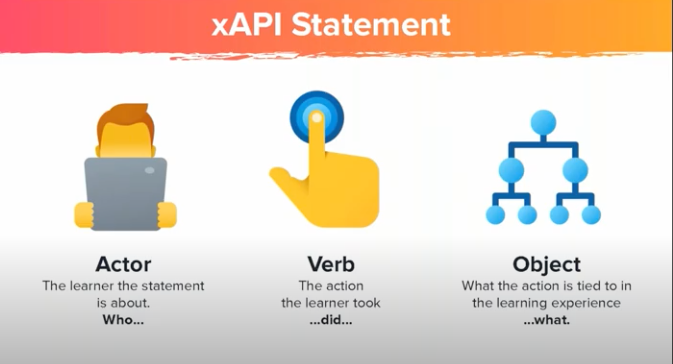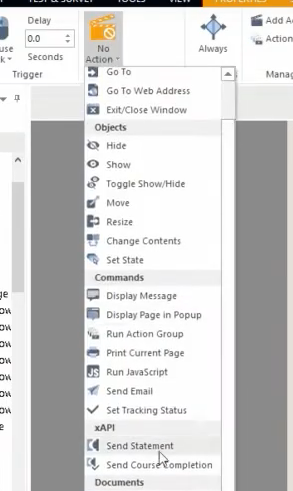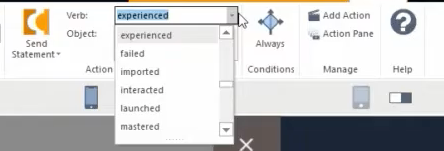We’ve started a new monthly live jam session with the Lectora “Mod Squad.” During these live webinars, you’ll get to interact with members of the eLearning Brothers Lectora product team who work behind the scenes to continuously enhance Lectora for your eLearning development success.
This month’s session focused on analytics and measuring learning outcomes using xAPI.
So let’s talk xAPI.
At its simplest, xAPI is a specification for collecting data about learning experiences. You’re storing data in the form of simple statements about what a learner has done.
You can use that data to track learner behavior inside of a traditional eLearning course in a really granular way. You can also collect data about learning that takes place in other environments.
What are the differences between SCORM and xAPI?
Both of these specifications track learner data. But you can track more data in xAPI.
SCORM |
xAPI |
|
|
Track completion |
✔ |
✔ |
|
Track time |
✔ |
✔ |
|
Track pass/fail |
✔ |
✔ |
|
Report a single score |
✔ |
✔ |
|
Report multiple scores |
✔ |
|
|
Detailed test results |
✔ |
|
|
No LMS required |
✔ |
|
|
No internet browser required |
✔ |
|
|
Keep complete control over your content |
✔ |
|
|
No cross-domain limitation |
✔ |
|
|
Use mobile apps for learning |
✔ |
|
|
Platform transition (i.e. computer to mobile) |
✔ |
|
|
Track serious games |
✔ |
|
|
Track simulations |
✔ |
|
|
Track informal learning |
✔ |
|
|
Track real-world performance |
✔ |
|
|
Track offline learning |
✔ |
|
|
Track interactive learning |
✔ |
|
|
Track adaptive learning |
✔ |
|
|
Track blended learning |
✔ |
|
|
Track long-term learning |
✔ |
|
|
Track team-based learning |
✔ |
Table source: xAPI.com
The structure and vocabulary of xAPI is so simple that it can be used in more environments to collect learner data. This opens up the possibility of creating more varied learning experiences that are more revelant to your learners’ needs—all while still tracking and proving the effectiveness of these learning experiences.
Jump to 11:42 in the video to see Bill break down more concrete examples of how instructional designers can use xAPI.
What is an xAPI statement?
This is a sentence that gets submitted to the Learning Record Store (LRS) about what the learner did. There is a specific structure for the sentence: actor - verb - object. Essentially it tells who did what.

What can you do with Lectora and xAPI?
If this is the content you’re here for, jump to 29:54 in the video.
We’ve taken care of building xAPI statements for you using built-in actions in Lectora.


You can also create custom xAPI statements in Lectora.








